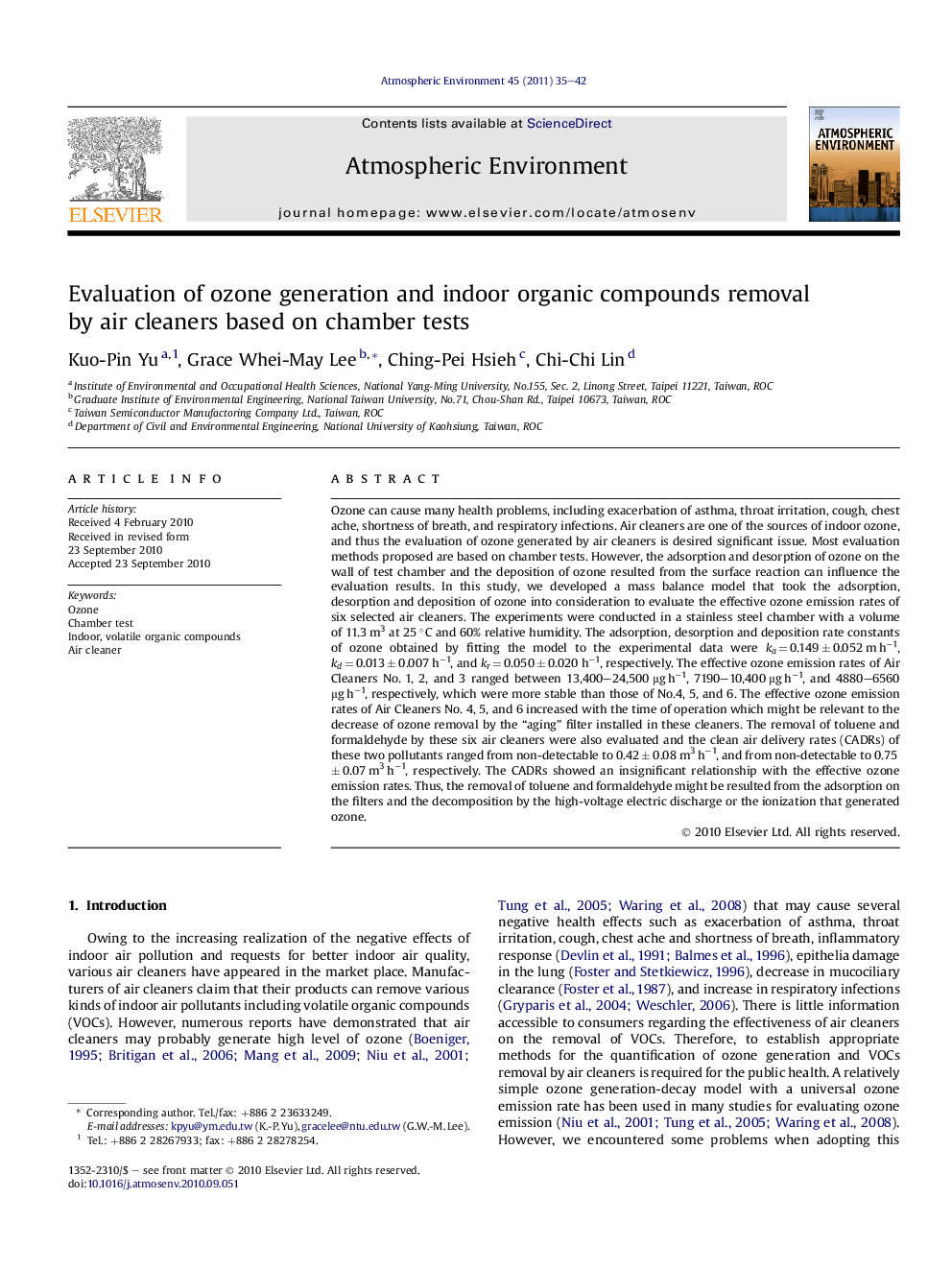| Article ID | Journal | Published Year | Pages | File Type |
|---|---|---|---|---|
| 4440335 | Atmospheric Environment | 2011 | 8 Pages |
Ozone can cause many health problems, including exacerbation of asthma, throat irritation, cough, chest ache, shortness of breath, and respiratory infections. Air cleaners are one of the sources of indoor ozone, and thus the evaluation of ozone generated by air cleaners is desired significant issue. Most evaluation methods proposed are based on chamber tests. However, the adsorption and desorption of ozone on the wall of test chamber and the deposition of ozone resulted from the surface reaction can influence the evaluation results. In this study, we developed a mass balance model that took the adsorption, desorption and deposition of ozone into consideration to evaluate the effective ozone emission rates of six selected air cleaners. The experiments were conducted in a stainless steel chamber with a volume of 11.3 m3 at 25 °C and 60% relative humidity. The adsorption, desorption and deposition rate constants of ozone obtained by fitting the model to the experimental data were ka = 0.149 ± 0.052 m h−1, kd = 0.013 ± 0.007 h−1, and kr = 0.050 ± 0.020 h−1, respectively. The effective ozone emission rates of Air Cleaners No. 1, 2, and 3 ranged between 13,400–24,500 μg h−1, 7190–10,400 μg h−1, and 4880–6560 μg h−1, respectively, which were more stable than those of No.4, 5, and 6. The effective ozone emission rates of Air Cleaners No. 4, 5, and 6 increased with the time of operation which might be relevant to the decrease of ozone removal by the “aging” filter installed in these cleaners. The removal of toluene and formaldehyde by these six air cleaners were also evaluated and the clean air delivery rates (CADRs) of these two pollutants ranged from non-detectable to 0.42 ± 0.08 m3 h−1, and from non-detectable to 0.75 ± 0.07 m3 h−1, respectively. The CADRs showed an insignificant relationship with the effective ozone emission rates. Thus, the removal of toluene and formaldehyde might be resulted from the adsorption on the filters and the decomposition by the high-voltage electric discharge or the ionization that generated ozone.
